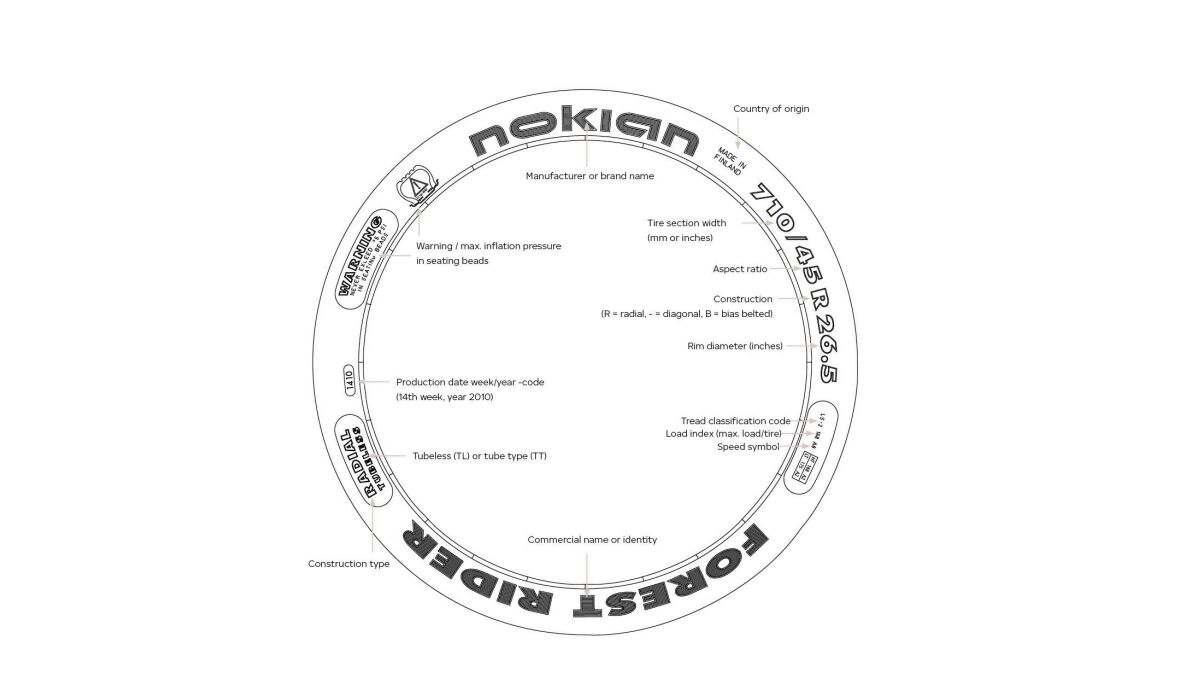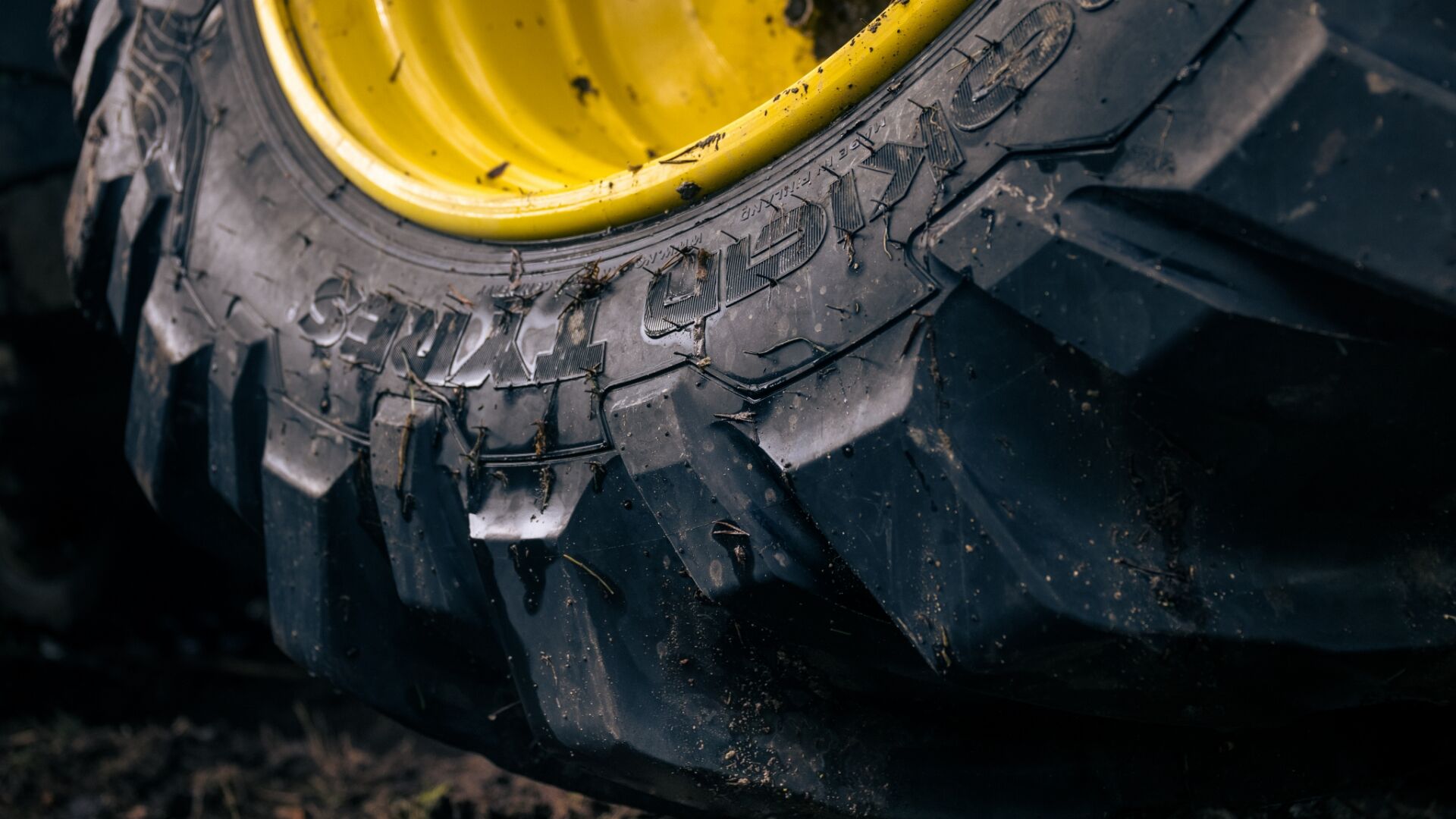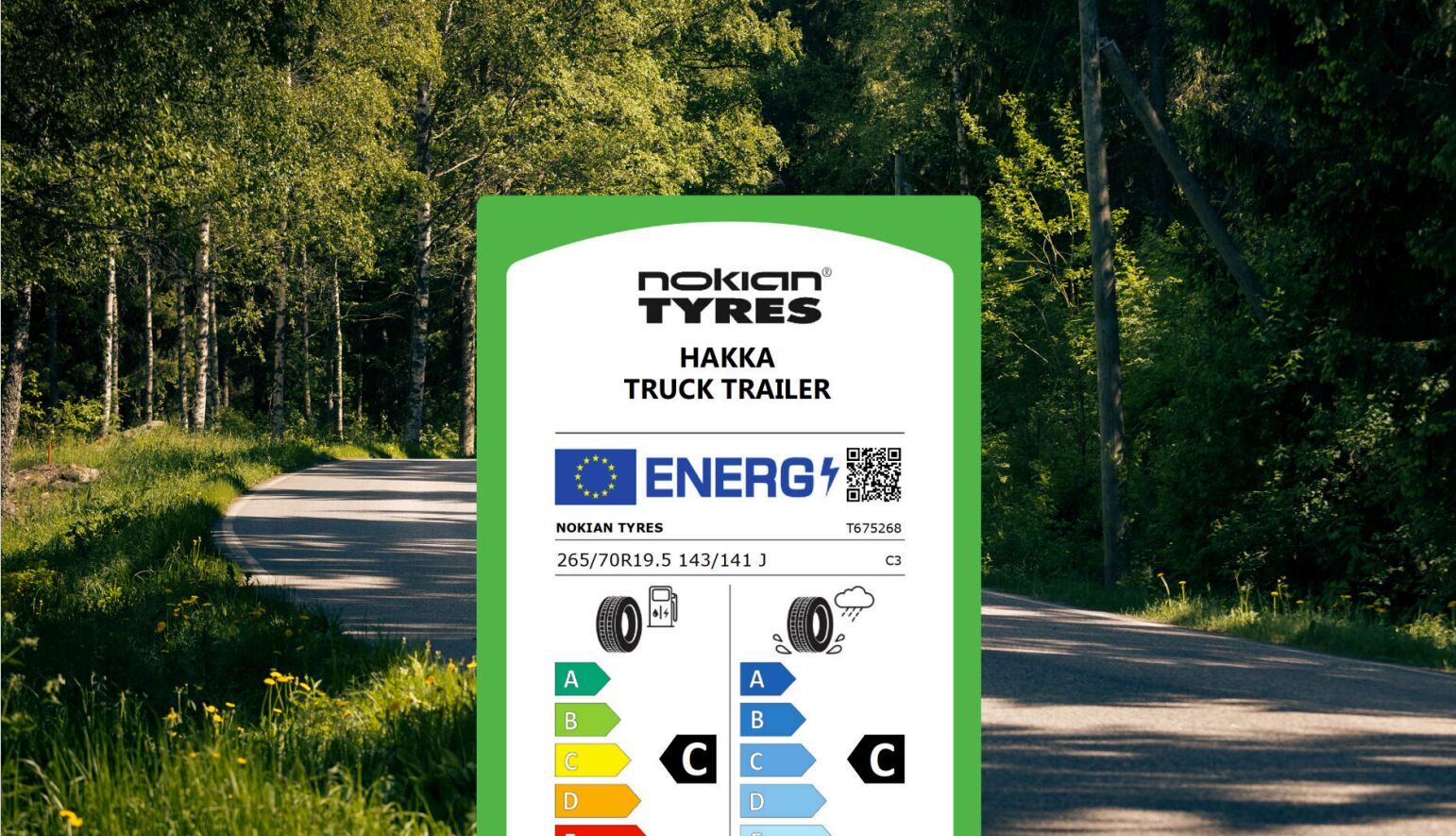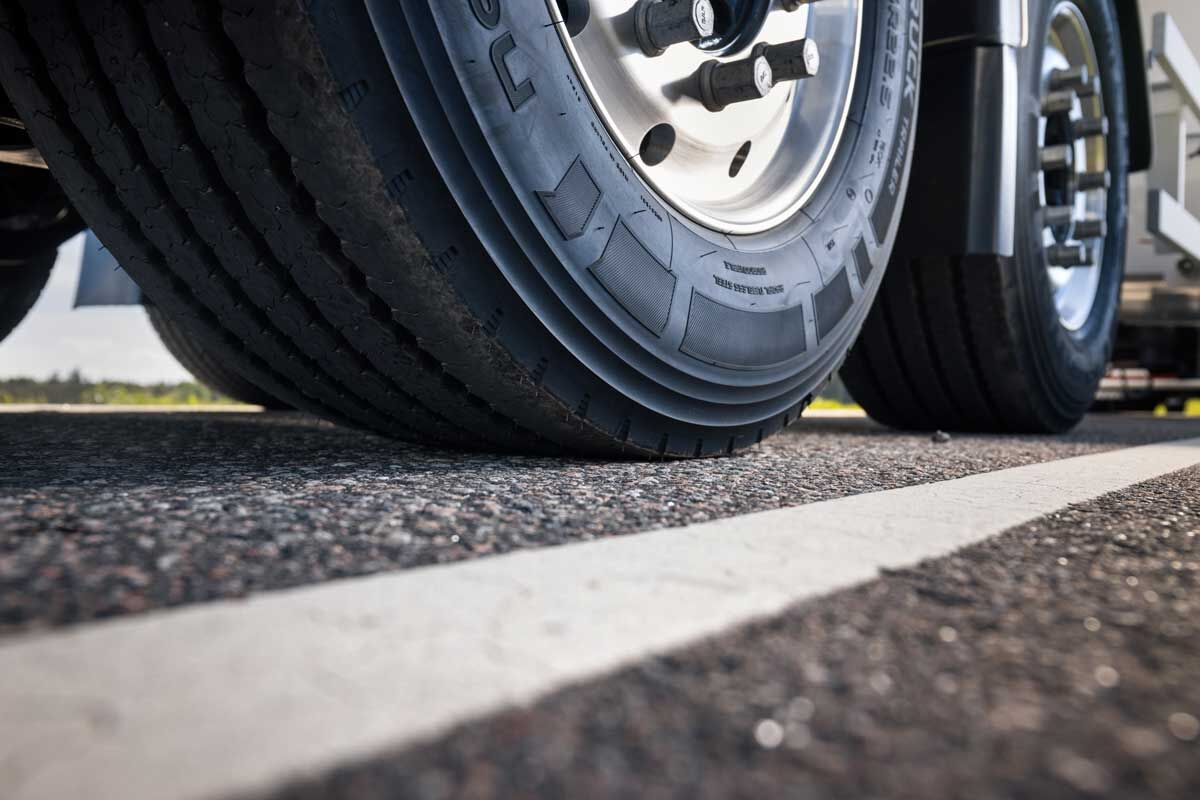
Selecting heavy tires for tractors, trucks, and other heavy machinery requires an understanding of the tires’ different features, such as size, carrying capacity and tire type. Fortunately, tire manufacturers include valuable information in the form of tire markings that help you find exactly the right tires for your vehicle.
How to read tire markings?

Size and Dimensions
Tire size and dimensions is perhaps the most critical piece of information to look for in tire markings. Tire size is indicated with a sequence of numbers and letters that tell you the tire’s width, aspect ratio, construction, and rim diameter.
Let’s use theNokian Tyres Hakka Truck Drivedrive axle tire for trucks and buses, which is available in the following size: 295/80R22.5
- Tire width: In our example tire, the first number indicates that the tire is 295 millimeters wide
- Aspect ratio : The number following a slash represents the height of a tire's sidewall as a percentage of its width, which is 80 in our example.
- Tire construction: The letter R indicates that the tire has a radial construction (the “-” symbol stands for diagonal and “B” for bias-belted construction).
- Rim diameter: The last number (22.5 in our example) indicates the rim diameter in inches.
FIND HEAVY TIRES IN DIFFERENT SIZES
Load index
In addition to tire size, the markings tell you the tire’s load index, indicating the maximum weight a tire can support. However, note that the load index is accurate only when the tire is properly inflated using the manufacturer’s recommendations and adjusting for the outside temperature. Using tires with the appropriate load index indicated in their markings lets you choose safe tires that do not pose a risk of damage in use.
Remember that the load index does not indicate a specific load but rather corresponds to a weight. A table in the Nokian Tyres technical tire manual shows what each load index corresponds to in kilograms or pounds.
Speed rating
Similarly to the load index, finding tires with an appropriate speed rating is crucial for safety. The speed rating tells you the maximum speed a tire can handle safely and without damaging it. The rating is indicated with a letter that corresponds to a maximum speed. You can check what different speed ratings mean from the table in our technical manual.

Tread classification code and additional markings
In addition to the information above, tire markings can contain other safety markings, such as the maximum pressure for seating on the rim and the maximum inflation pressure. Some noteworthy information you can find about the tire incudes:
- Tread classification code: This indicates the intended use of the tire. For example, is the tire best suited for off-road, winter, or mixed applications.
- M+S and 3PMSF markings: The M+S (Mud and Snow) marking indicates that the tire is suitable for winter conditions, while the Three-Peak Mountain Snowflake (3PMSF) symbol means the tire meets specific performance standards for severe snow conditions. Check your local tire requirements and legislation for winter driving.
- Tubeless (TL) or tube type (TT): The markings TL and TT tell you whether the tire is designed to be used with (tube type) or without (tubeless) an inner tube.
Warnings and inflation pressure
Tires also include safety warnings and instructions on the sidewall that are essential for operating and maintaining your tires safely. These can include:
- Maximum inflation pressure: The highest pressure the tire can handle safely when mounting onto a rim. The inflation pressure must be the same as specified by the tire manufacturer.
- Seating pressure: The maximum pressure for seating the tire onto the rim without causing damage. Never exceed the maximum pressure indicated in tire markings.
- General safety warnings: These often advise against overloading, underinflation, or exceeding speed limits to prevent premature tire failure. Familiarize yourself with all safety markings in a tire to ensure safety and optimal performance on the road.
You can find more detailed information about tire markings, including optional markings for different tire types, from our technical tire manual.
EU tire label
On top of the standard tire markings that help you choose tires of the right size and load capacity, truck and bus operators in the EU can find additional information with the EU tire label.
Similar to the energy labels found in household appliances, the EU tire label informs users by classifying tires based on their wet grip, rolling noise, fuel efficiency as well as grip on snow and ice.

The label’s simple classifications make finding safer, eco-friendlier and fuel-efficient tires easy. The EU tire label requirements, which also cover truck and bus tires, were enacted on May 1, 2021.
Please remember that it is the driver’s responsibility to ensure their tires are safe and suitable for their vehicle and to follow the vehicle’s manufacturer´s guidelines for proper use and maintenance. Consult your closest Nokian Tyres dealer or your vehicle’s manufacturer for specific advice.


